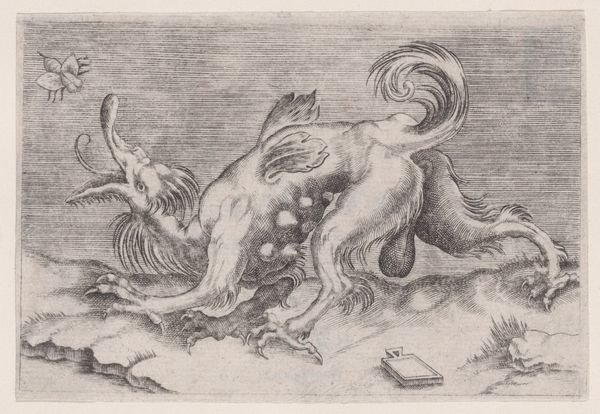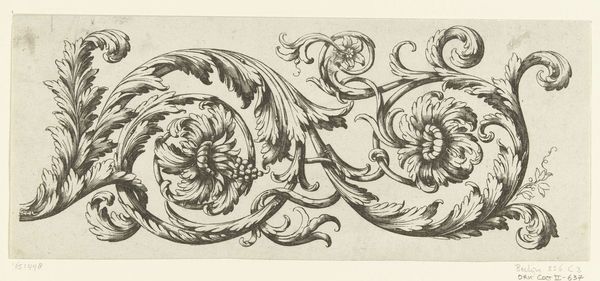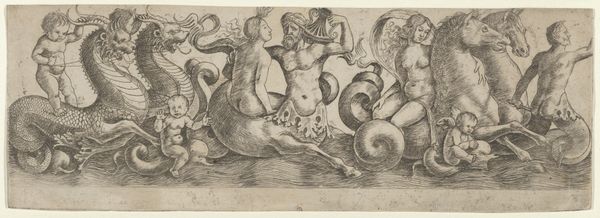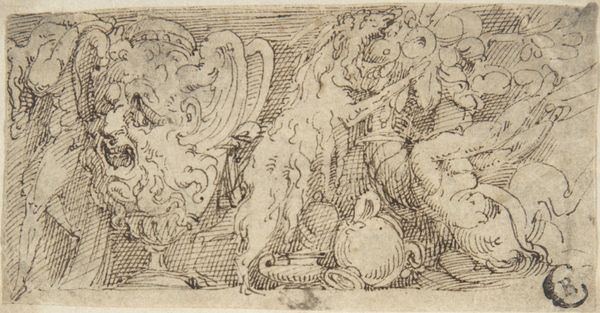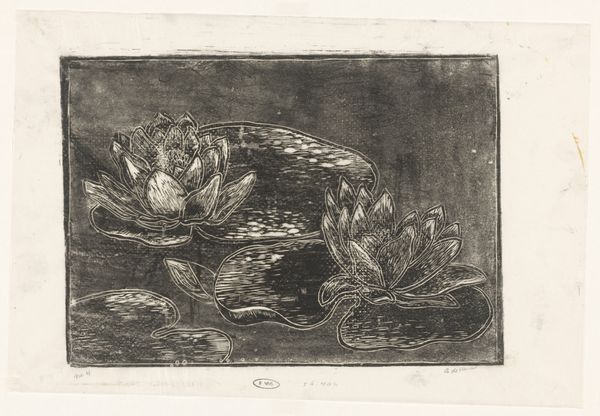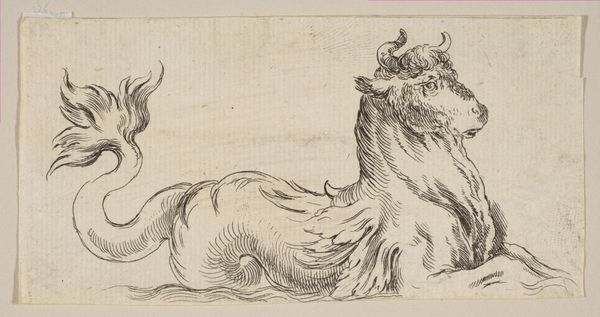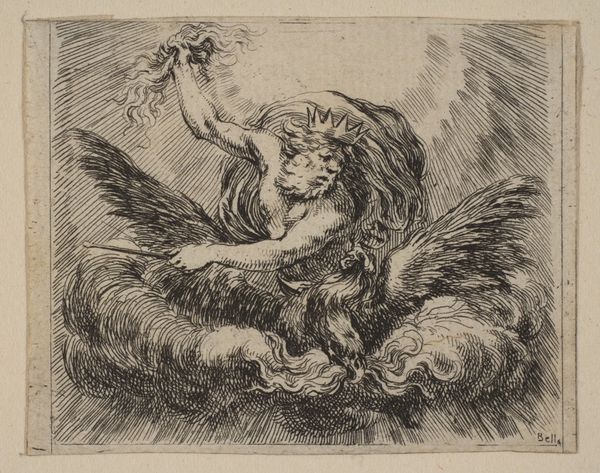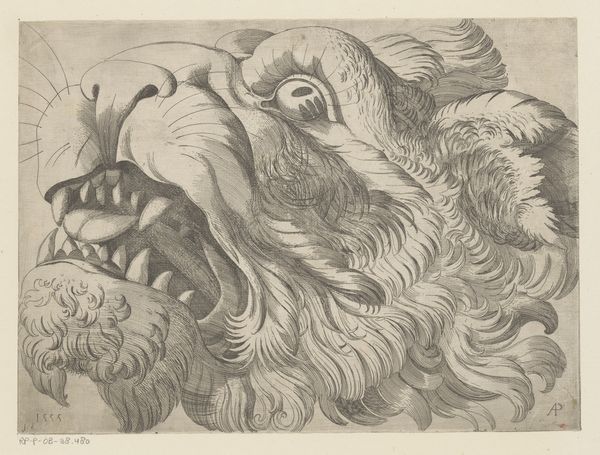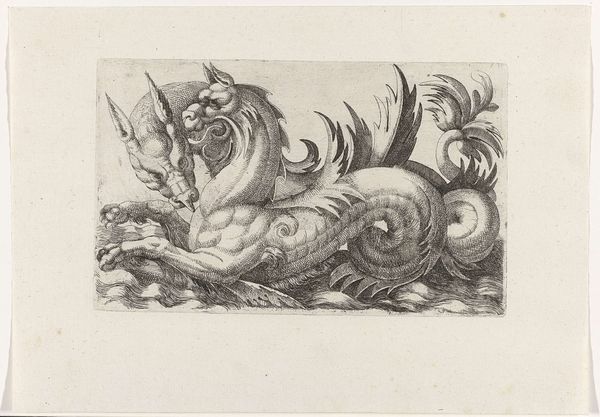
Design for a Frieze with Acanthus Scrolls and a Leopard in the Center, Plate 10 from: 'Decorative friezes and foliage' (Ornamenti di fregi e fogliami) 1645 - 1650
0:00
0:00
drawing, print, engraving
#
drawing
#
baroque
# print
#
history-painting
#
decorative-art
#
engraving
Dimensions: Sheet: 3 3/16 × 9 3/4 in. (8.1 × 24.7 cm)
Copyright: Public Domain
Curator: At first glance, it feels very alive, almost teeming with a kind of restless energy despite being static. The leopard gives it that forward momentum, I think. Editor: We're looking at "Design for a Frieze with Acanthus Scrolls and a Leopard in the Center," created between 1645 and 1650 by Stefano della Bella. It’s plate 10 from a series titled "Decorative friezes and foliage". The artist used engraving, that's right, a type of printmaking that renders these incredibly intricate linear patterns across the composition. Curator: Intricate is an understatement! Consider the recurring acanthus leaf motifs and the overall Baroque exuberance in form. It speaks to a deeply ingrained classical vocabulary. Acanthus, long associated with immortality and regeneration – imagine its resonance within the palaces of the 17th century. Editor: It’s fascinating how the leopard is centered amidst the swirling foliage and classical motifs. There is a potent relationship between power and nature depicted, perhaps mirroring humanity's complex engagement with the natural world in that era. This visual of domination and spectacle echoes into colonial exploitation happening around the same period, informing a perspective of raw control and superiority. Curator: Yes, exactly! Leopards, often symbols of both royal power and untamed nature… Consider the symbolic weight of pairing it with the stylized, almost manicured acanthus. The animal represents untamed raw impulse contained, controlled by art and civilization. A taming, almost. Editor: I see that contrast but it pushes me to consider, who benefits from this control? Friezes like this often adorned spaces of wealth and power; they acted as a kind of reinforcement. The leopard, despite its central placement, could also signify subjugation rather than sheer strength. Curator: An intriguing idea, thinking of friezes as not just decoration, but also coded messages of social order. But I do see the decorative art speaking as an expression of humanity. A statement, by extension. The fruit conveys abundance, vitality and fertility. The work seems caught in tension, oscillating between power and a potent symbolism of fertility and strength, and ultimately reflects this internal conflict. Editor: It prompts us to look beyond aesthetics and toward systems of power… something essential to interrogating how even "decorative" art upheld certain perspectives. It certainly reminds us to challenge art and architecture beyond just "beauty". Curator: Agreed, the dialogue between animal power and refined ornamentation gives you insight into its complex, layered symbolism. Editor: And contextualizing it through colonialism adds a layer of necessary unease.
Comments
No comments
Be the first to comment and join the conversation on the ultimate creative platform.

